Closed reduction is the minimally invasive technique that can be used for stable fractures of extremities with no loss of blood flow, no risk of infection, fast functional recovery, significantly reduced medical costs, and can be used for closed reduction hollow nail and intramedullary pin fixation treatment of various unstable fractures, such as femoral neck fractures, femoral stem fractures, tibiofibular fractures, humeral stem fractures, etc., eliminating the destruction of blood flow by incisional reduction.
Fracture of the neck of the femur
(I) Traction
The patient is placed in bed, and tibial tuberosity traction is performed with the affected limb in a neutral position with mild internal rotation. The weight of traction varies from person to person, generally 6-9 kg, and the duration of traction should not exceed 12 hours. 90% of patients can achieve repositioning by traction.
(B) closed manipulative repositioning
If traction fails to achieve the repositioning requirements, manual repositioning can be added, under epidural anesthesia:
MC Elvenny method
The purpose is to fix the pelvis, externally rotate the affected limb and increase the traction force, and then internally rotate and internally retract the affected limb to achieve the purpose of repositioning.
2. Leadbetter method
The patient lies flat on the ground, bend the affected hip and knee by 90°, traction along the femoral axis of the affected limb for 2 to 3 minutes, then internally rotate the affected limb and lightly flex it, after resetting, gently lower the affected limb, and if the affected foot does not appear to be externally rotated, it mostly indicates successful resetting. Before performing internal fixation, the C-arm machine was used to verify.
(C) Percutaneous needle prying technique
If repositioning is not achieved by the above methods, it usually indicates either that the femoral head has been broken or that there has been a rotational separation between the head and neck (Figure 1A), or that there is an insertion somewhere between the head and neck. (This can occur in any of the Garden II, III, or IV types). In this case, rotating the affected limb to dovetail the head and neck fracture is no longer effective. In order to avoid incision and repositioning, a percutaneous needle prying technique can be used to reposition the fracture.
A 3.0- to 3.5-mm-diameter bone circular needle is inserted vertically through the skin 1 to 2 cm below the junction of the inguinal ligament and the femoral artery to the front of the femoral head, and the needle is rotated deeper to the center of the femoral head under the supervision of the C-arm machine (Figure 1B).
To strengthen the prying force, a second bone circular needle can be inserted 4-5 mm parallel to this needle, with the end of the needle left outside the skin.
Through the greater trochanter, two 3.5 mm diameter bone circular needles are drilled percutaneously in accordance with the angle of the cervical stem and the angle of anterior tilt, reaching the distal end of the femoral neck fracture (do not pass through the fracture) and leaving the end of the needle outside the skin.
The operator holds the two sets of needle tails with both hands and adjusts the head and neck fracture sections to align with each other with the cooperation of the assistant (Figure 1C-E).
After the alignment is satisfactory, a bone round pin inserted at the greater trochanter is screwed into the femoral head for temporary fixation, and several hollow screws are then inserted into the femoral head (Figure 1F).
The closed reduction method described above can achieve the required reduction in about 98% of femoral neck fractures. The better the alignment of the fracture, whether closed or incised, the better the prognosis. Usually, the degree of fracture dislocation shown on X-ray is less than the actual degree of fracture dislocation. Since the fracture alignment directly affects the healing of the fracture and the possibility of necrosis of the femoral head, it is necessary to have a correct judgment of the X-ray film after the fracture alignment. If the S-shaped curve is not smooth or interrupted, it indicates that the femoral neck fracture has not reached anatomical repositioning (Figure 2).
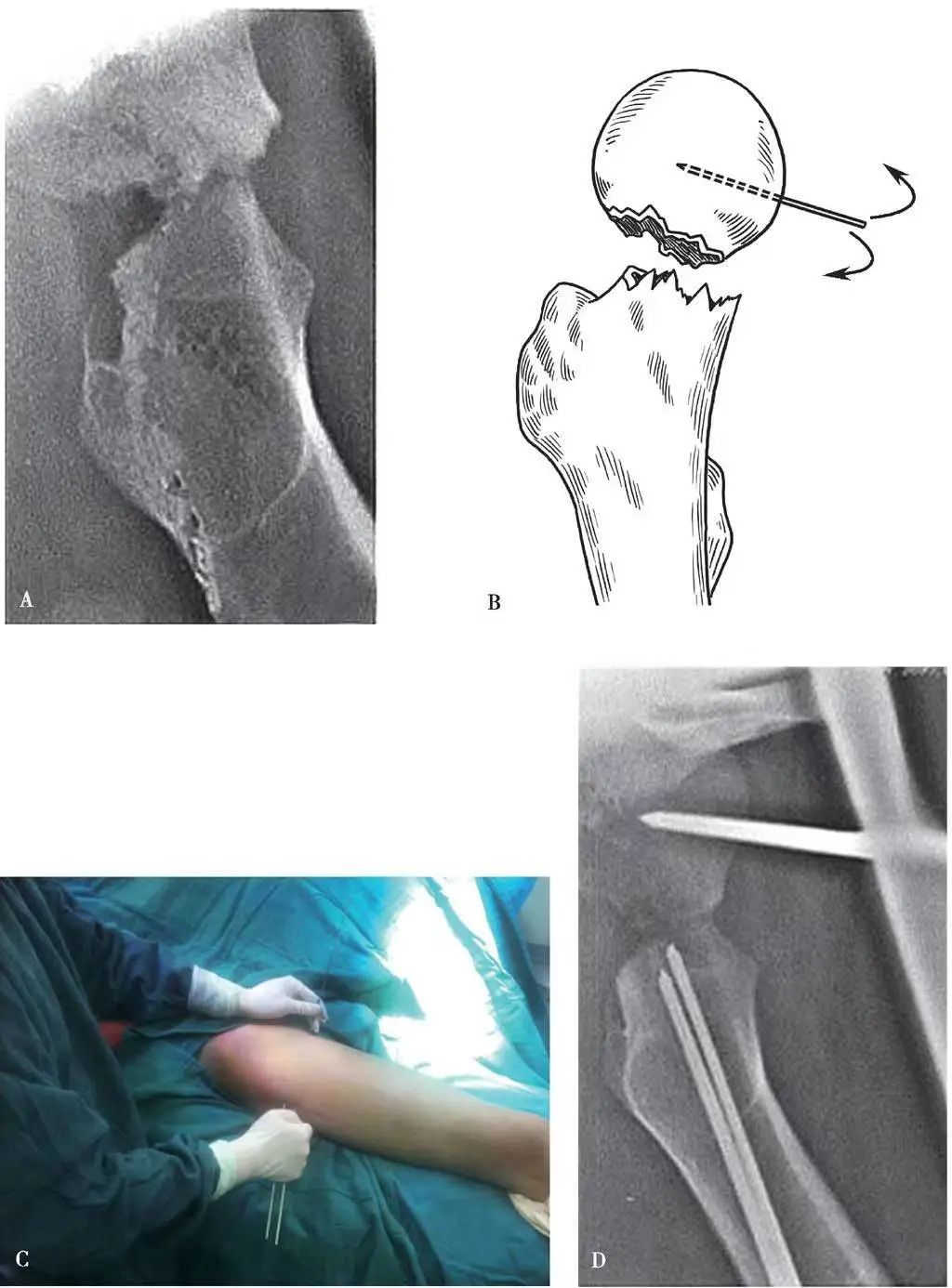
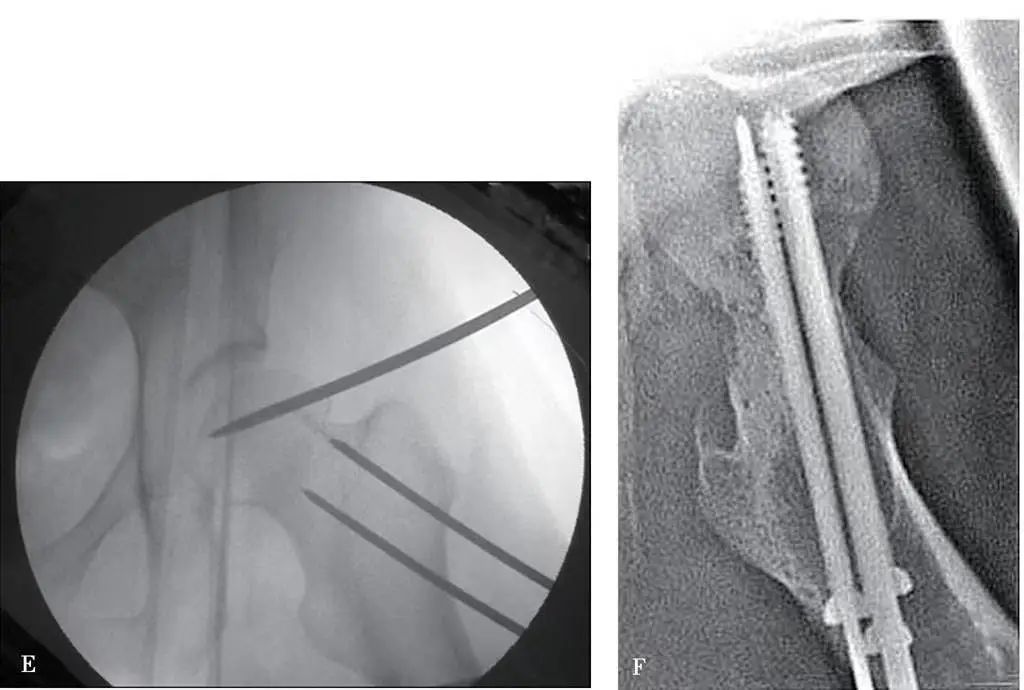
Figure 1 Femoral neck fracture repositioned by percutaneous needle prying
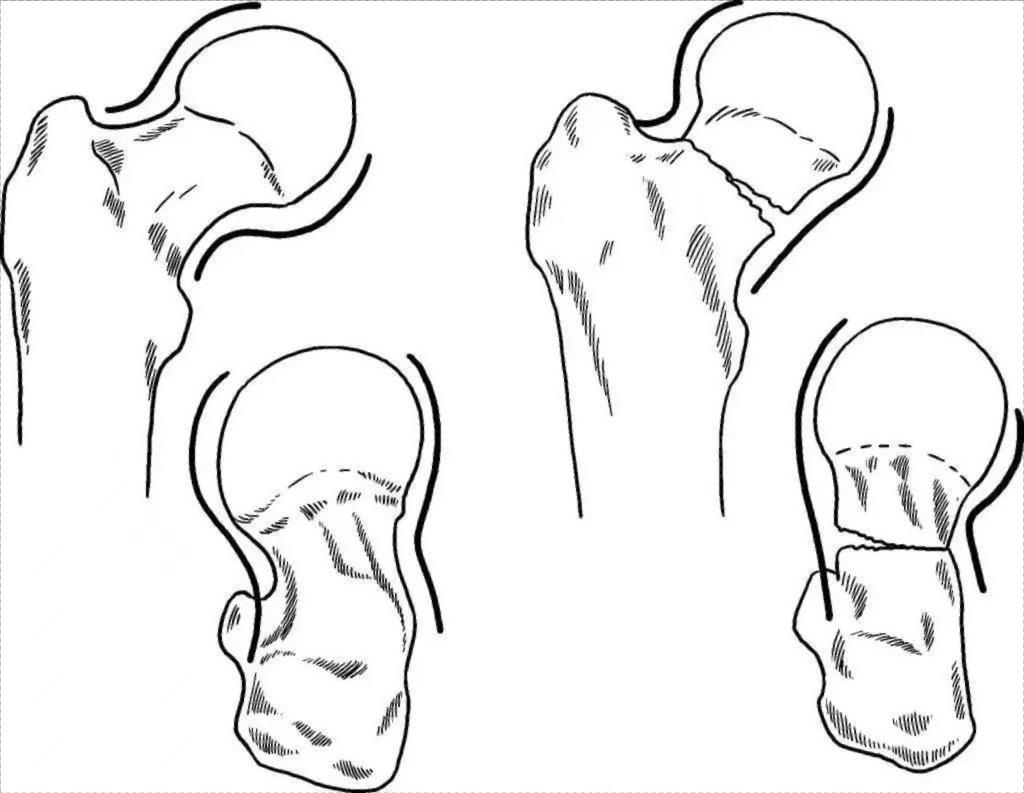
Figure 2 Femoral neck fracture X-rays with continuous external curve in anatomical alignment and interrupted external curve in non-anatomical alignment
Femoral stem fracture
The closed reduction technique can assist in the alignment of the femoral stem fracture without damaging any soft tissues or blood supply to the fracture end, and can be used for internal fixation with an intramedullary nail.
Under epidural anesthesia, the patient is lying flat on the bed (the skin of the affected limb has not been sterilized at this time), one assistant holds the calf of the affected limb, and the other assistant pulls the patient's thigh root with a cloth belt to counteract the traction, with the affected limb in a neutral position and the patella of the knee facing upward (the femoral stem fracture is usually not rotated and displaced by muscle pulling, and can be corrected automatically by traction, so the operator only needs to correct the anterior-posterior and lateral displacement of the broken end of the stem).
The operator uses both arms to encircle the affected limb and holds the hands together (Figure 3 and Figure 4), and corrects the anterior-posterior and lateral displacement of the fracture at once by using the oblique clamping force of both forearms.
For example, if the proximal segment of the femur fracture is displaced outward and anteriorly, one forearm is used to squeeze the proximal segment of the fracture inward and downward. The other forearm squeezes the distal fracture segment outward and upward to borrow the clasping force (the resetting physician should have a proper judgment of the fracture displacement direction and displacement distance before resetting), so that the fracture can be successfully reset at one time. During the repositioning process, the assistant should increase the traction force and keep the femur from rotating.
When the fracture end is basically lapped, a mild bone rubbing sound must be heard, at this time, the assistant should still maintain traction, but reduce the traction force.
When the fracture is basically aligned by the C-arm machine (if there is still a little misalignment, make some adjustments to make sure the fracture ends match each other), maintain the traction, disinfect the affected limb and spread the towel, and then perform intramedullary nail fixation.
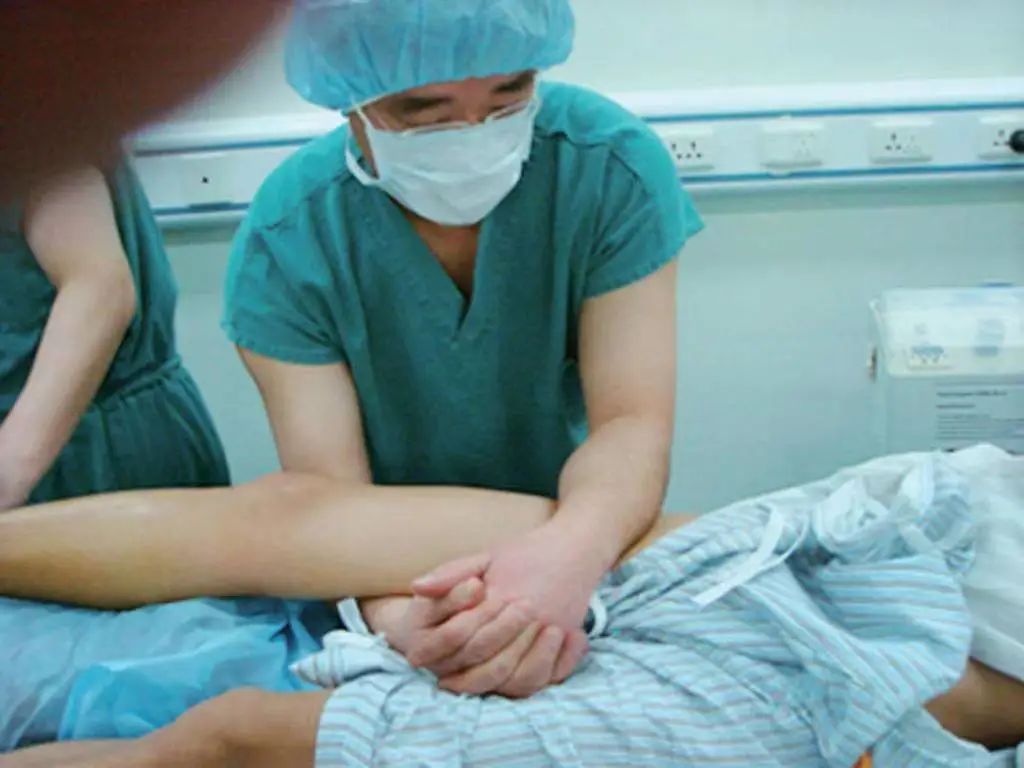
Fig. 3 The anterior-posterior and lateral displacement of the fracture is corrected at the same time by wrapping both arms around the affected limb and clasping the hands together, using the clamping force of both forearms.
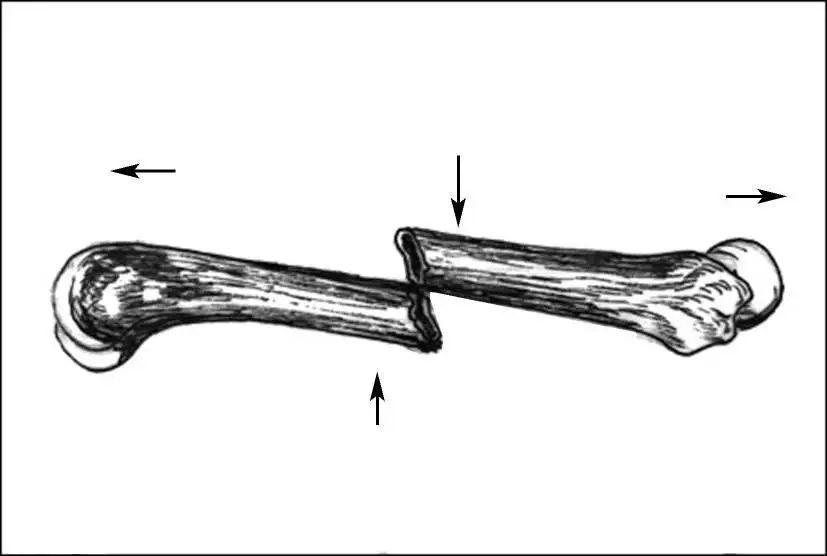
Figure 4 Femoral stem fracture repositioning mechanics schematic
For patients with large fracture displacement, unsuccessful closed manipulation or comminuted fractures, a surgical traction bed can be used for closed reduction with some instrumental force, which can also effectively complete closed reduction of the femoral stem fracture.
After placing the affected limb on the traction frame for traction and the C-arm examination shows that the overlapping fracture displacement has been corrected, the distal end of the affected limb can be adjusted inward to further restore the alignment and alignment in the orthostatic image of the femoral stem.
However, at this time, due to the lack of effective support at the distal end of the fracture segment under the effect of gravity, the distal fracture segment of the femoral stem is mostly displaced posteriorly, and at this time, the sterile towel-covered brace can be placed on the posterior side of the distal fracture end after sterilization and skin preparation and laying of sterile sheets, and the posterior displacement of the distal fracture end can be corrected by adjusting the height of the brace.
If the posterior displacement of the distal fracture segment is still not corrected, a proximal nail can be established percutaneously at the apex of the greater trochanter or the pyriform fossa, and then the intramedullary repositioning rod is inserted into the medullary cavity of the proximal fracture segment of the femur, and the handle of the intramedullary repositioning rod is raised moderately forward to depress the proximal fracture of the femur backward by using the lever of the repositioning rod, thus restoring alignment with the posteriorly displaced distal fracture,
After the fracture is aligned, a long guide pin is inserted into the distal fracture cavity to complete the closed reset. The intramedullary repositioning rod is particularly effective in correcting the flexion, abduction, and external rotation deformities common in proximal fractures of the proximal femur (Figure 5).
Another method of closed reduction is to screw a Schanz nail into the bone cortex on the side of the displaced fracture end and adjust the fracture end by means of the Schanz nail for closed reduction (Figure 6). After the fracture is satisfactorily aligned, the intramedullary nail is inserted into the proximal and distal medullary cavity of the fracture to complete the internal fixation (Figure 7).
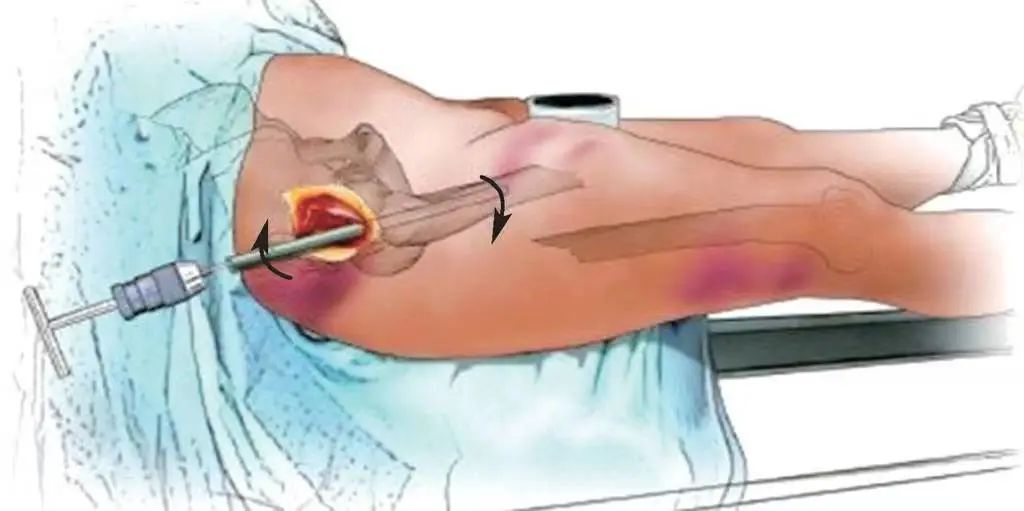
Figure 5 Manipulation of the proximal fracture segment for closed repositioning using the intramedullary repositioning rod
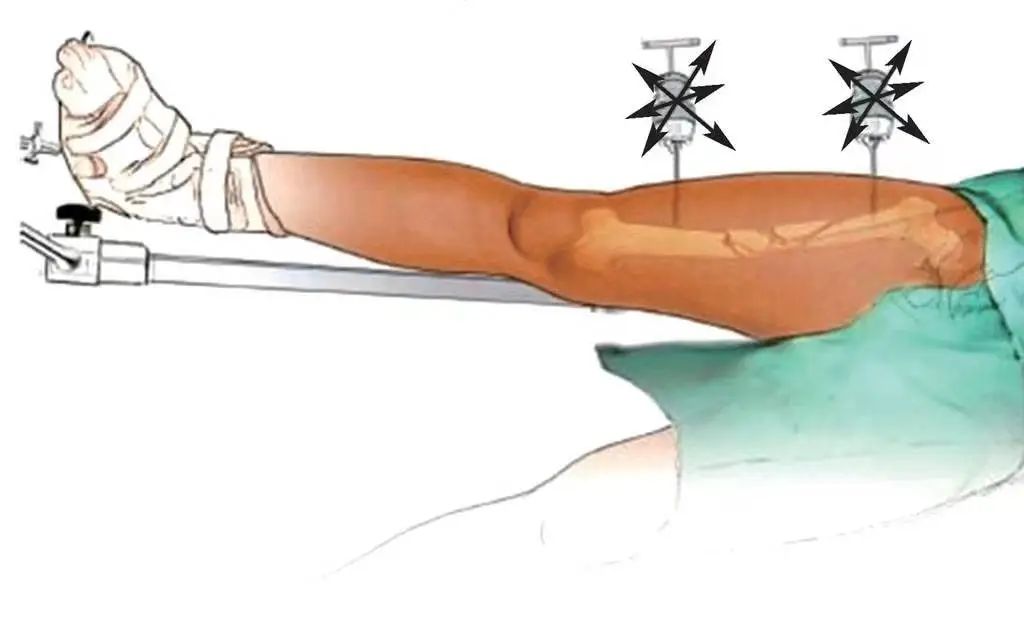
Figure 6 Closed reduction using a Schanz nail placed in the unilateral bone cortex at the fracture end
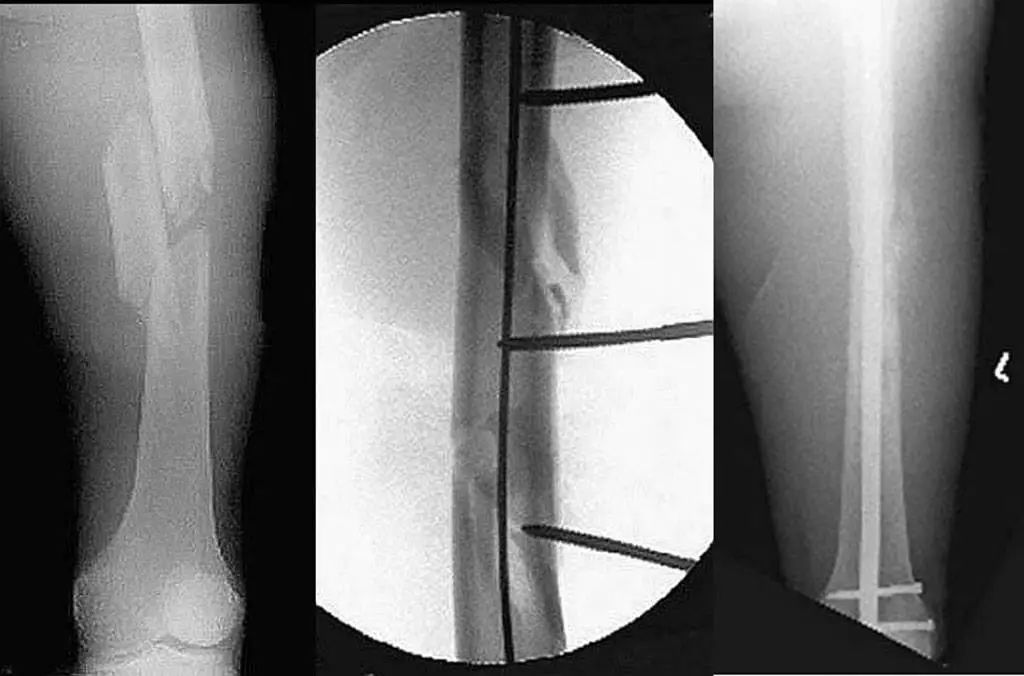
Figure 7 Closed reduction intramedullary nail fixation of a multisegmental comminuted fracture of the femoral stem using the Schanz nail
Ankle fracture
(A) Preoperative preparation
Sometimes a simple medial ankle fracture may be part of a more complex "Maisonneuve fracture", which also includes a proximal fibula fracture and a combined ligament injury, so the entire tibiofibula should be radiographically examined.

Figure 8 Front and rear position
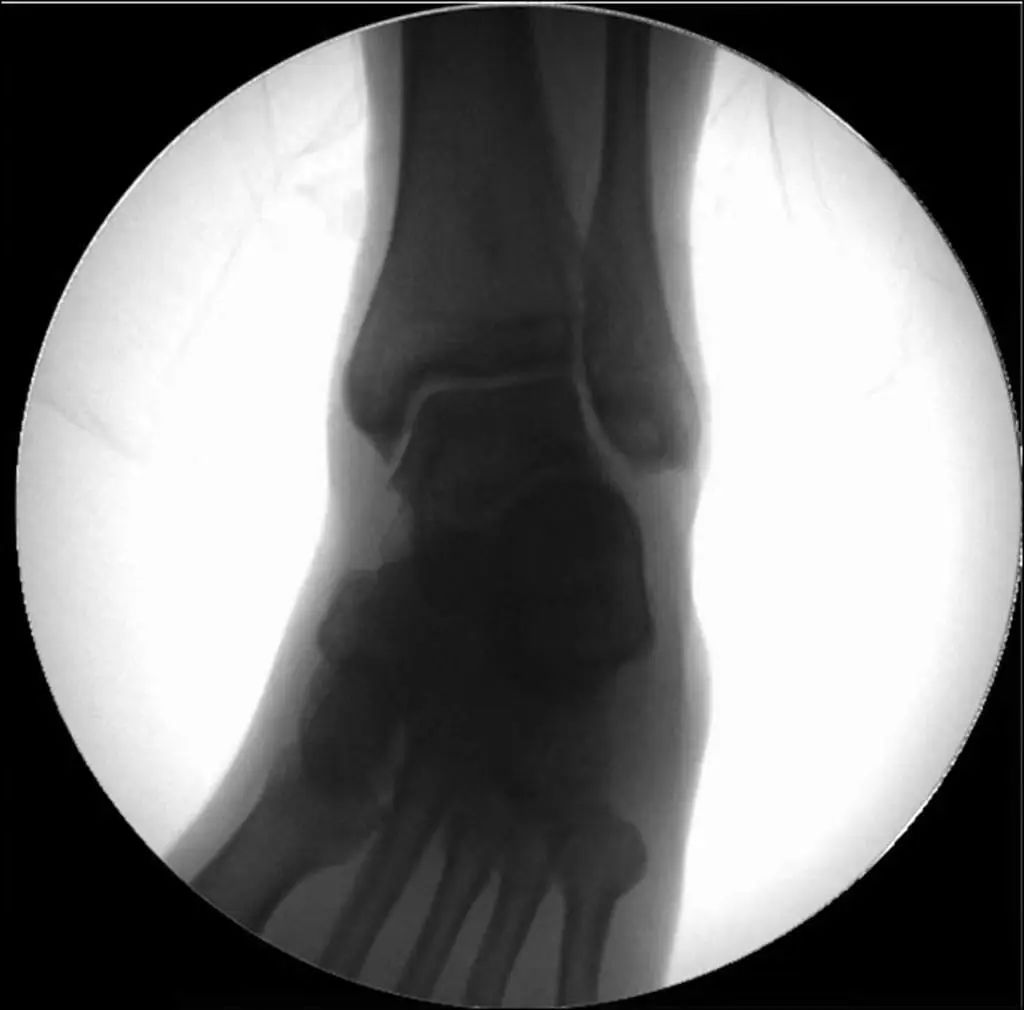
Figure 9 Ankle points (15° of internal rotation)

Figure 10 Lateral position
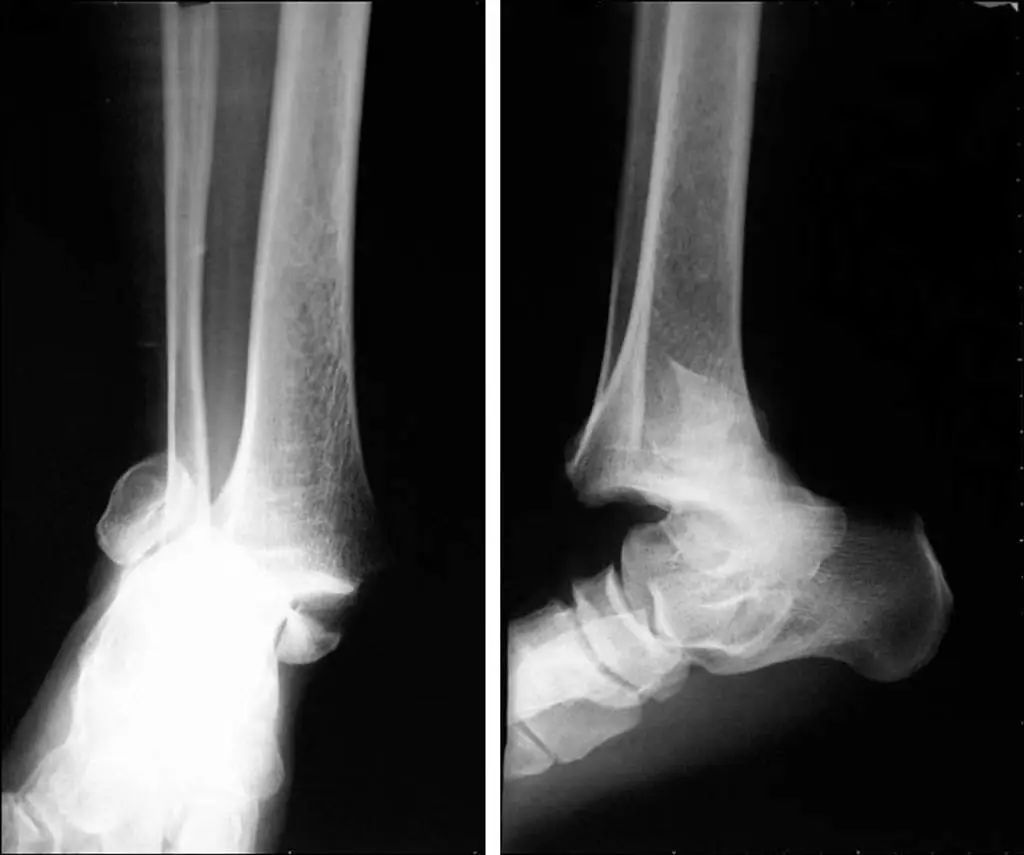
Figure 11 Fracture displacement apparently combined with dislocation
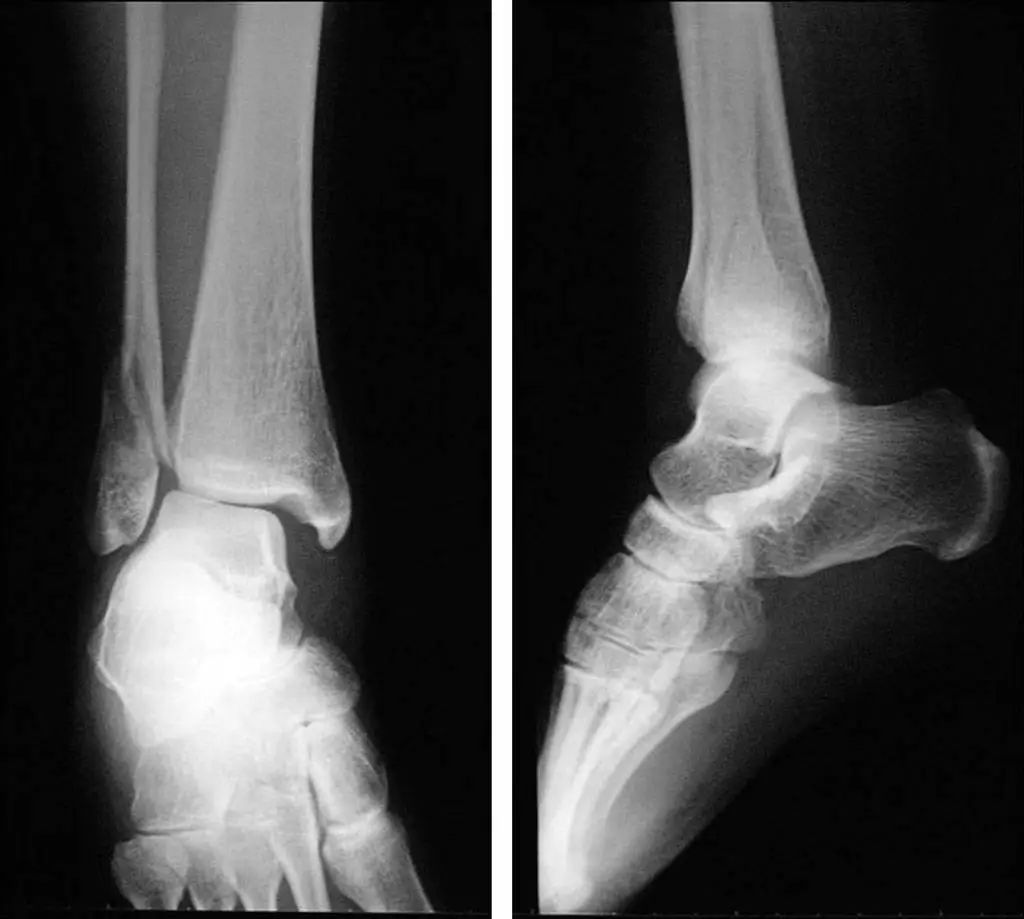
Figure 12 Stress radiograph (triangular ligament rupture)
(II) Anesthesia
Femoral and sciatic nerve anesthesia is usually taken.
(C) reset technique
The posterior-external rotation type of closed repositioning is performed in the order of external ankle-internal ankle-posterior ankle-inferior tibiofibular union. The posterior rotation-internal rotation type is performed in the order of internal ankle-external ankle.
The assistant pulling the foot rotates the foot inward to correct the external rotation deformity (Figure 13). While pushing the distal end toward the tibial side and pulling the distal tibia toward the fibular side, the assistant inwardly turns and dorsally extends the ankle joint to correct the displacement of the external ankle and talus (Figure 14).
Maintain the internal rotation-internal rotation-dorsal extension position. Then the posterior ankle fracture block is held by both thumbs, the four fingers encircle the distal tibia, and both thumbs push and squeeze distally, while pulling down the distal tibia to reset the posterior ankle (Figure 15).
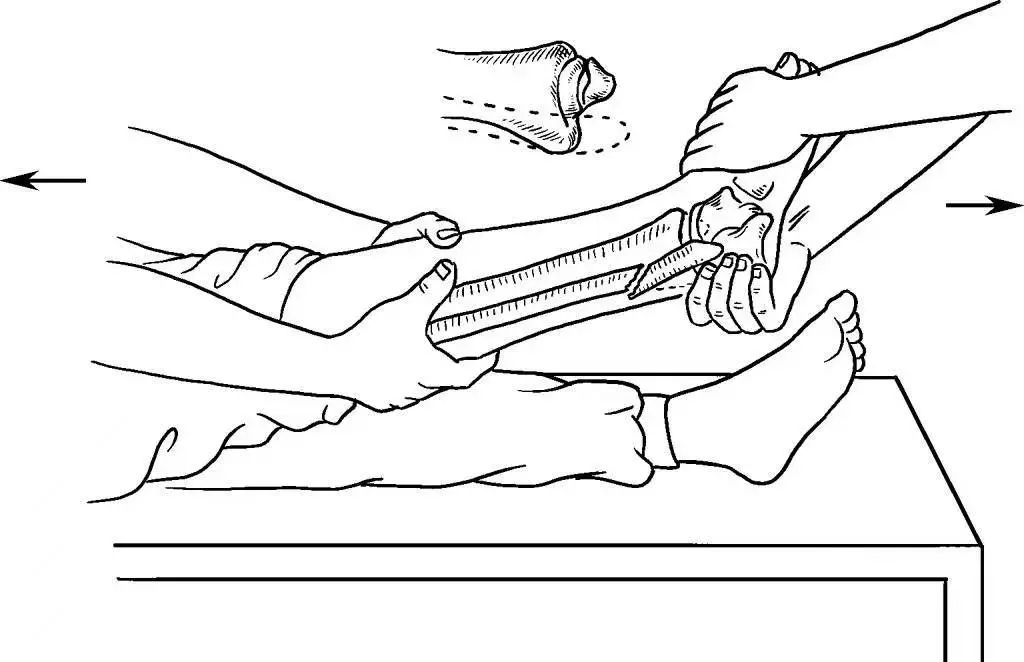
Figure 13 Traction correction of external rotation deformity
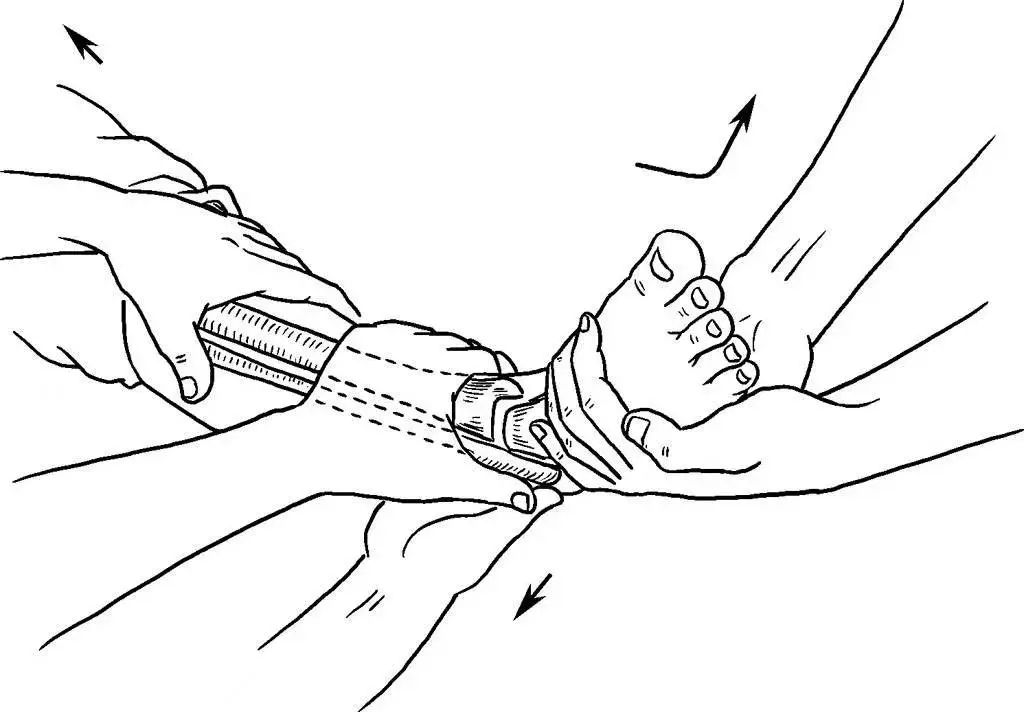
Figure 14 Correction of lateral displacement of the external ankle and talus
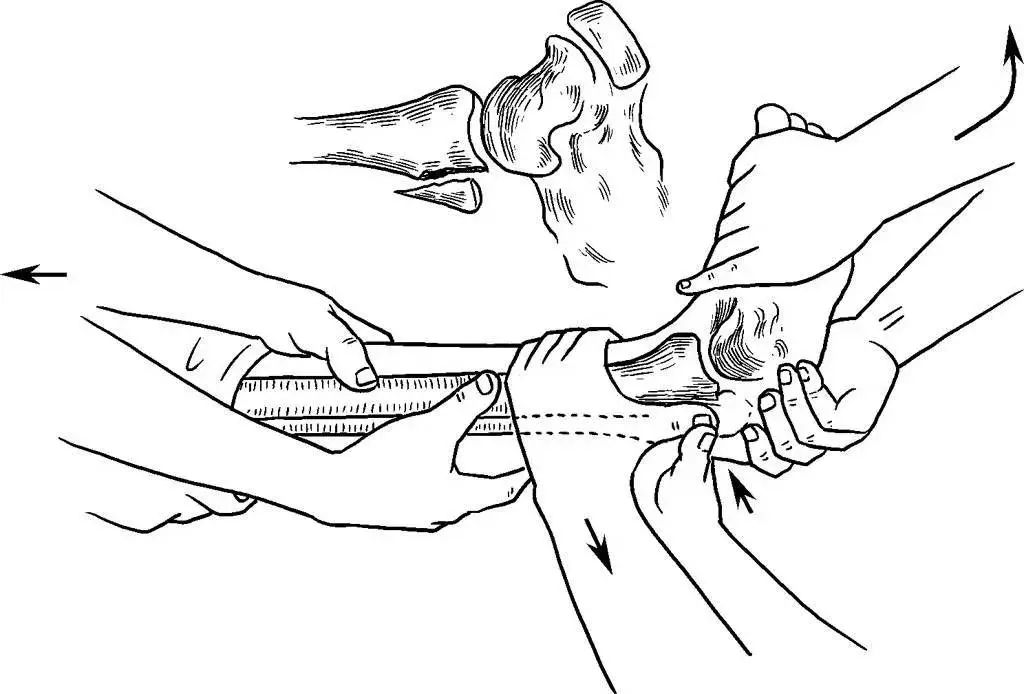
Figure 15 Correction of posterior ankle shift
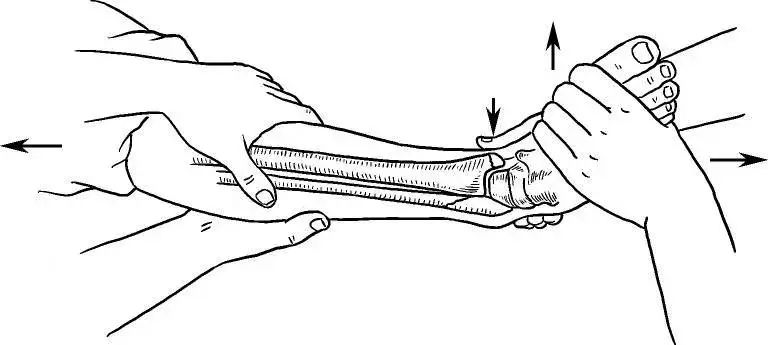
Figure 16 Correction of internal ankle displacement
The post-rotation-internal repositioning process is the opposite of the post-rotation-external repositioning process and is performed in the order of internal ankle-external ankle.
How to Buy Orthopaedic Implants and Orthopaedic Instruments?
For CZMEDITECH, we have a very complete product line of orthopedic surgery implants and corresponding instruments, the products including spine implants, intramedullary nails, trauma plate, locking plate, cranial-maxillofacial, prosthesis, power tools, external fixators, arthroscopy, veterinary care and their supporting instrument sets.
In addition, we are committed to continuously developing new products and expanding product lines, so as to meet the surgical needs of more doctors and patients, and also make our company more competitive in the whole global orthopedic implants and instruments industry.
We export worldwide, so you can contact us at email address song@orthopedic-china.com for a free quote, or send a message on WhatsApp for a quick response +86-18112515727.
If want to know more information,click CZMEDITECH to find more details.
English
Français
Русский
Español
العربية
Português
Deutsch
italiano
日本語
한국어
Nederlands
Tiếng Việt
ไทย
Polski
Türkçe
አማርኛ
ພາສາລາວ
ភាសាខ្មែរ
Bahasa Melayu
ဗမာစာ
தமிழ்
Filipino
Bahasa Indonesia
magyar
Română
Čeština
Монгол
қазақ
Српски
हिन्दी
فارسی
Kiswahili
Slovenčina
Slovenščina
Norsk
Svenska
українська
Ελληνικά
Suomi
Հայերեն
עברית
Latine
Dansk
اردو
Shqip
বাংলা
Hrvatski
Afrikaans
Gaeilge
Eesti keel
Māori
नेपाली
Oʻzbekcha
latviešu
অসমীয়া
Aymara
Azərbaycan dili
Bamanankan
Euskara
Беларуская мова
भोजपुरी
Bosanski
Български
Català
Cebuano
Corsu
ދިވެހި
डोग्रिड ने दी
Esperanto
Eʋegbe
Frysk
Galego
ქართული
guarani
ગુજરાતી
Kreyòl ayisyen
Hausa
ʻŌlelo Hawaiʻi
Hmoob
íslenska
Igbo
Ilocano
Basa Jawa
ಕನ್ನಡ
Kinyarwanda
गोंगेन हें नांव
Krio we dɛn kɔl Krio
Kurdî
Kurdî
Кыргызча
Lingala
Lietuvių
Oluganda
Lëtzebuergesch
Македонски
मैथिली
Malagasy
മലയാളം
Malti
मराठी
ꯃꯦꯇꯥꯏ (ꯃꯅꯤꯄꯨꯔꯤ) ꯴.
Mizo tawng
Chichewa
ଓଡ଼ିଆ
Afaan Oromoo
پښتو
ਪੰਜਾਬੀ
Runasimi
Gagana Samoa
संस्कृत
Gaelo Albannach
Sepeti
Sesotho
chiShona
سنڌي
Soomaali
Basa Sunda
Wikang Tagalog
Тоҷикӣ
Татарча
తెలుగు
ትግንያውያን
Xitsonga
Türkmençe
संस्कृत
ئۇيغۇرچە
Cymraeg
isiXhosa
ייִדיש
Yorùbá
isiZulu



























